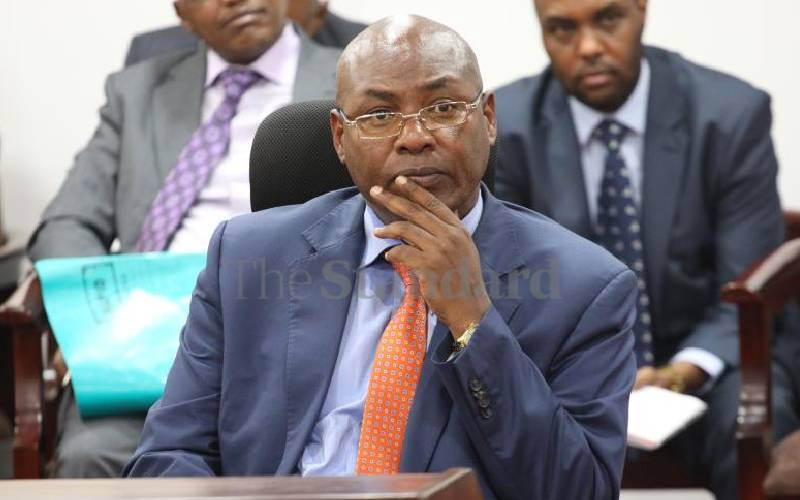“There are certain things in which mediocrity is not to be endured, such as poetry, music, painting and public speaking.” French philosopher Jean de la Bruyere said this, emphasising the need to strive for the gold standard when speaking to a nation. It is possible that President Uhuru Kenyatta’s Madaraka Day speech will stand out as the most significant display of his oratory skills.
This came at a time when most Kenyans were wondering why, despite having secured political freedom 57 years ago, the promise of economic freedom has remained elusive. The speech neatly weaves together the foundational ideas that make Project Kenya a reality. In a remarkable departure from the political history often served to Kenyans during such national holidays, Kenyatta’s speech instead surveyed the economic history of Kenya and invites a new understanding of its core economic concerns.
Nothing is more singular about this generation than its concerns about the economy. And indeed, Uhuru acknowledged that Kenya is a work in progress, one whose history draws heavily from fundamental writings, not least being the Session Paper Number 10 of 1965 titled “African Socialism and its Planning to Kenya” which envisioned a Kenya with an Africanised economy.
Similar sentiments were echoed, key among them Jaramogi Oginga Odinga’s Not Yet Uhuru and Tom Mboya’s Freedom and After which argued for an expansion of African participation in the post-independence economy. For 20 years, there was a great emphasis on the Africanisation of the public service. This was up until Session Paper Number 1 of 1986 was published, pointing out the immense potential of private enterprise as a way of creating jobs and reducing poverty, at a time Kenya was still reeling from the economic shocks triggered by the 1973 oil crisis.
However, the attendant policies of the Structural Adjustment Programs by the IMF and the World Bank greatly strained the Kenyan economy, and donor funding was cut off due to concerns around corruption.
The 21st century arrived with great promise for Kenya. The radical surgery of the Judiciary in 2003 and the fight against corruption helped restore public confidence and ensured public revenues rose to a level that strengthened Kenya’s finances, making the country less dependent on loans.
The launch of M-Pesa dramatically improved cash circulation, breathing new life into small businesses. Ironically, it was also a time of deep ethnic tensions that plunged the country into unprecedented political violence.
Under a government of national unity, the Vision 2030 dream was unveiled with the promise of transforming Kenya into a middle-income country within two decades.
As a result, the escalation of public debt at a time when corruption cases were also on the rise weighed heavily, not only on the local economy but also on the national psyche.
Over the last five years, businesses have witnessed the operating environment getting tougher due to weak cash circulation owing to a significant portion of tax revenue being directed towards servicing foreign debt while revenue leakage through graft also takes its toll on the economy.
As a response to these trying times, Kenyatta’s speech was filled with deep resolve and conviction on what needs to happen on the road ahead. Strengthening the governance system through a constitutional amendment will certainly shield the economy from the political tensions that grip the country every election cycle.
Furthermore, his emphasis on a new civic culture injects new hope to the possibility of re-imagining a national dream. While the tenets of Chapter 6 have already been eloquently laid out in our constitution, Uhuru called on need to bring this culture to order.
Finally, additional reforms will still be required particularly in the conduct of our fiscal and monetary policy. These two pillars have not always been working in the same direction and could benefit from the establishment of a broader Ministry of Economy that attempts to harmonise them into achieving common economic goals.
- The writer is chief economist at Mentoria Economics
Stay informed. Subscribe to our newsletter
 The Standard Group Plc is a
multi-media organization with investments in media platforms spanning newspaper
print operations, television, radio broadcasting, digital and online services. The
Standard Group is recognized as a leading multi-media house in Kenya with a key
influence in matters of national and international interest.
The Standard Group Plc is a
multi-media organization with investments in media platforms spanning newspaper
print operations, television, radio broadcasting, digital and online services. The
Standard Group is recognized as a leading multi-media house in Kenya with a key
influence in matters of national and international interest.
 The Standard Group Plc is a
multi-media organization with investments in media platforms spanning newspaper
print operations, television, radio broadcasting, digital and online services. The
Standard Group is recognized as a leading multi-media house in Kenya with a key
influence in matters of national and international interest.
The Standard Group Plc is a
multi-media organization with investments in media platforms spanning newspaper
print operations, television, radio broadcasting, digital and online services. The
Standard Group is recognized as a leading multi-media house in Kenya with a key
influence in matters of national and international interest.








